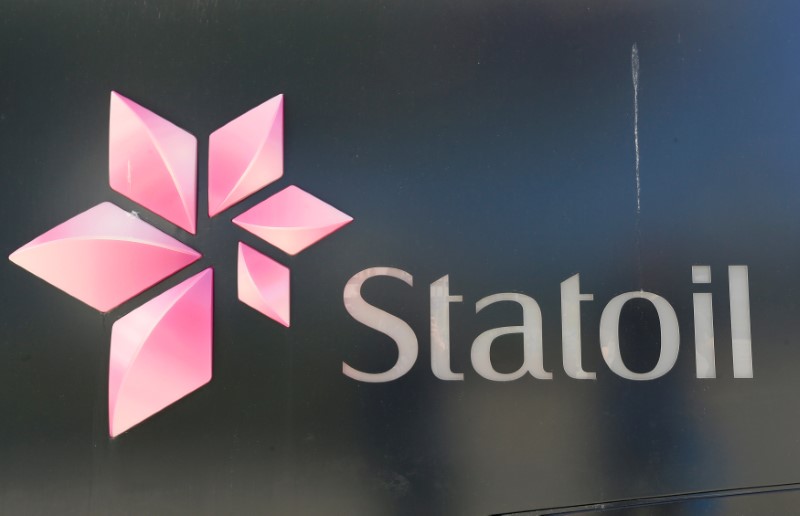Statoil spuds controversial prospect in northern Barents Sea
Drilling began last Monday at a controversial Statoil prospect more than 400 kilometers north of mainland Norway and is expected to last until early September.
For Statoil, Korpfjell is very important and fingers are crossed to find big oil. The company says new and major discoveries are “crucial to maintain the current Norwegian Continental Shelf production level up to 2030 and beyond.”

This summer, Statoil has its most active Barents Sea drilling campaign ever.
“The areas off North Norway will play a key role in reaching this ambition,” says Jez Averty, Statoil’s senior vice president for exploration on the Norwegian shelf.
So far this season, the partly state-owned oil company has had disappointing results from the Barents Sea. The Blåmann well contained gas, but not oil in volumes like Statoil hoped for. Last week, the same was announced for the Gemini North well; a small gas discovery, but only minor non-commercial oil.
The rig Songa Enabler has now moved to the northeastern part of the Norwegian sector of the Barents Sea where optimism is higher. The Korpfjell prospect, located at 74° North, is said to be very promising, potentially holding up to 10 billion barrels of oil, which would make it an “elephant,” a field with huge resources.
Statoil and the Norwegian government hope the coming month will bring answer to how much big oil there could be at Korpfjell prospect. Greenpeace, however, says the drilling is the most controversial taking place anywhere on the planet this year.
“Statoil’s Arctic drilling program this summer is the most aggressive drilling program globally this year, and the Korpfjell and Koigen prospects the two most controversial in that portfolio,” Truls Gulowsen, head of Greenpeace Norway told the Barents Observer. He points to the map and argues that both are way too far north towards the ice edge and polar front, in important seabird habitats.

“In addition,” Gulowsen says, “by drilling Korpfjell, Norway is also violating the climate lawsuit brought by Greenpeace and Nature and Youth. It is also the first offshore well ever outside the 200 nm exclusive economic zone.”
In the lawsuit, the organizations argue that new oil licenses violate both the Paris Climate Agreement and paragraph 112 of the Norwegian Constitution, which commits the government “to safeguard the people’s right to a clean and healthy environment for future generations.”
On Tuesday by noon, the Greenpeace vessel Arctic Sunrise was located just east of the drilling rig Songa Enabler, according to MarineTraffic.com, a portal tracking ship traffic in real time.
Last week, the NGO Oil Change International released a report stating Norway’s plans for oil exploration and production are at odds with its commitments to the Paris climate goals.
“In addition to being the world’s seventh largest emissions exporter, projected oil and gas development in the country are incompatible with global carbon budgets aligned with limiting global warming to 2 degrees Celsius or 1.5 degrees Celsius,” the report reads.
Report author Greg Muttitt underscores that Norway must change its course.
“The global climate crisis requires leadership that we believe Norway can deliver. But first, the country must take a hard look at its plans to continue to explore for and expand new oil and gas – development that we find is incompatible with the Paris climate goals.”
Statoil disagrees and has published a list of counter arguments hoping to convince those sceptical to Arctic oil drilling. Regarding climate changes, the company writes it is fully committed to the Paris Agreement and is rapidly expanding offshore wind power business. “However, the world needs more energy than renewables can provide, and existing oil fields are dwindling. Even in the two-degree scenario, more oil is needed. That’s why we’re exploring for more fields.”
The Korpfjell prospect is one of the northernmost offshore oil-drillings on the planet, but Statoil says it is not dangerous and difficult to drill in the Arctic.
“Drilling the Barents Sea is little different from the rest of the Norwegian continental shelf, where we been safely exploring for oil for nearly 50 years,” the company argues and points to the 130 wells already been drilled in the Barents Sea with no serious incidents.
“Even so, we have upgraded our emergency preparedness significantly.”
Korpfjell prospect is named after the mountain Korpfjell that lies on the northernmost part of the 196-kilometer-long Norwegian, Russian land border north of Kirkenes.